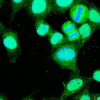235430 Sigma-AldrichCaspase-3 Intracellular Activity Assay Kit I (PhiPhiLux® G₁D₂)
Recommended Products
Overview
| Replacement Information |
|---|
Key Spec Table
| Detection Methods |
|---|
| Fluorescence |
| Applications |
|---|
| Biological Information | |
|---|---|
| Assay time | 2 h |
| Sample Type | Intact cells |
| Physicochemical Information | |
|---|---|
| Emission max. | |
| Excitation max. | |
| Dimensions |
|---|
| Materials Information |
|---|
| Toxicological Information |
|---|
| Safety Information according to GHS |
|---|
| Safety Information |
|---|
| Product Usage Statements |
|---|
| Packaging Information |
|---|
| Transport Information |
|---|
| Supplemental Information | |
|---|---|
| Kit contains | Flow cytometry buffer, PhiPhiLux® G₁D₂ substrate, and a user protocol. |
| Specifications |
|---|
| Global Trade Item Number | |
|---|---|
| Catalogue Number | GTIN |
| 235430 | 0 |
Documentation
Caspase-3 Intracellular Activity Assay Kit I (PhiPhiLux® G₁D₂) Certificates of Analysis
| Title | Lot Number |
|---|---|
| 235430 |
References
| Reference overview |
|---|
| Chang, S.H., et al. 2002. Exp. Cell Res. 277, 15. Kottke, T.J., et al. 2002. J. Biol. Chem. 277, 804. Liu, L., et al. 2002. Nat. Med. 8, 185. Telford, W.G., et al. 2002. Cytometry 47, 81. Packard, B.Z., et al. 2001. J. Immunol. 167, 5061. Finucane, D.M., et al. 1999. J. Biol. Chem. 274, 2225. Porter, A.G. and Janicke, R.U. 1999. Cell Death Differ. 6, 99. Robles, R., et al. 1999. Endocrinology 140, 2641. Hirata, H., et al. 1998. J. Exp. Med. 187, 587. Packard, B.Z., et al. 1998. J. Phys. Chem. B 102, 1820. Siegel, R.M., et al. 1998. J. Cell Biol. 141, 1243. Packard, B.Z., et al. 1997. Methods Enzymol. 278, 15. Nicholson, D.W., et al. 1995. Nature 376, 37. |
Brochure
| Title |
|---|
| Caspases and other Apoptosis Related Tools Brochure |
| Kit SourceBook - 2nd Edition EURO |
| Kits SourceBook - 2nd Edition GBP |












